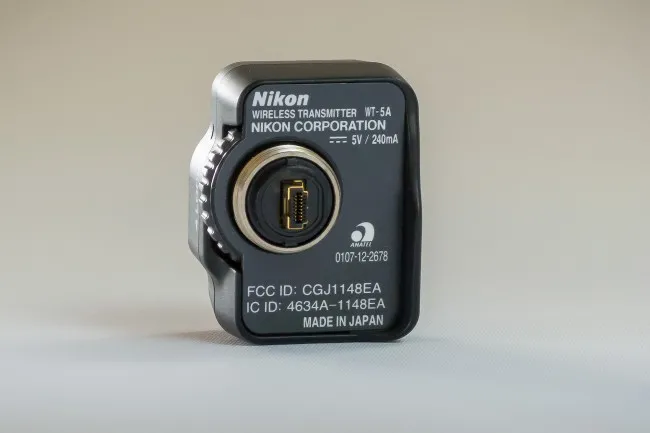
By Glenn Carpenter/Moraine Valley Community College
-
The referenced media source is missing and needs to be re-embedded.The Nikon Wireless Transmitter WT-5a, Photo by Andrew Daddio/ Colgate University
“This changes everything.” This was my first thought as I watched the behind the scenes video of Brigham Young University photographers using an iPad at a photo shoot. I watched as the art director held the iPad and the images appeared, I was amazed. This is the future of photography.
I quickly put together a list of what I needed to make this magic in Illinois. Along with the link to the BYU video I submitted the request to be just like BYU! The iPad and Eye-fi card arrived a few weeks later. The only problem is that I use Nikon. You see a Nikon D3 only uses CF memory and the Eye-fi card is SD memory. With the help of an adapter, I eventually got it to work but it was not perfect. I was not like BYU.
-
The referenced media source is missing and needs to be re-embedded.To create an ad-hoc network (1) Choose the Network connection from the Set UP menu, (2) Turn the network connection on, (3) Choose the type of network connection, (4) Connect the iPad to the network.
When my new D4 arrived it also had the new WT5a wireless transmitter, an additional option. I was cool like Mark and Jaren, almost. Set up was quick an easy, I chose to use the ad-hoc method, a direct connection to the iPad. The WT5a generates its own network that the iPad connects to via the web browser. The iPad can now view the images on the camera, but they are not downloaded to the iPad. There is an option to download selected files, but because I shoot RAW files the time to download is prohibitive.
-
The referenced media source is missing and needs to be re-embedded.The interface for controlling the camera with your iPad.
I have used this setup several times to the delight of art directors. They love seeing the images appear and it keeps them from hovering over your shoulder to see the screen on the camera. The big drawback is the power consumption. You will quickly go through a battery on a long shoot. This is a small price to pay for the convenience and the distance from the art director it provides. As I explored the possibilities or this new accessory I noticed that the camera could be controlled via the iPad. Not just a few controls but almost all of them; shutter speed, aperture, ISO, focus mode, and even live view!
How can I use this new power? I can use it to be cooler than BYU! Mu Wah haha! Sorry, a moment of Dr. Evil. This option of camera control is useful when looking through the camera is not convenient. One of these situations presented itself the other day. Why I was asked to shoot this photo is not important. Anyway, I need to photograph water drops reflecting pencils. The set up is quite simple but my back gets tired leaning over a camera.
-
The referenced media source is missing and needs to be re-embedded.Water drop shoot set up. The syringe is used to accurately place drops of water. Photo by Glenn Carpenter/Moraine Valley Community College
This is the perfect situation for the iPad! Depth of field is critical and trying to decide if it is to little or too much while leaning over a camera can be frustrating. Once I get the shot composed I can adjust aperture and ISO to achieve the perfect shot. The iPad also allows you to zoom in on the image on screen to check focus. This is cool.
Mark and Jaren, I have my water shot, I used the iPad, but I am not yet as cool as you. As all Cub Fans say, “Maybe next year.”
Glenn Carpenter is the current President of the University Photographers' Association of America and has been a photographer at Moraine Valley Community College for the past 22 years.